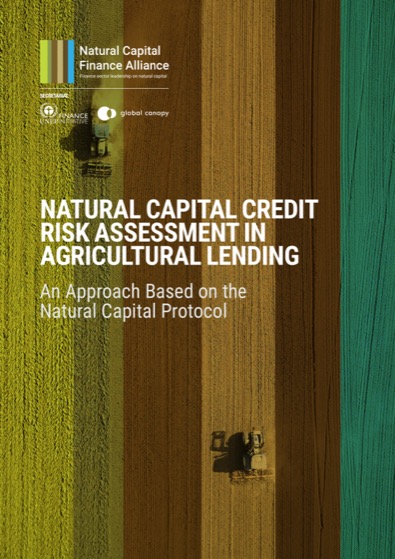A healthy environment is the best foundation for economic prosperity, human health and well‐being. Food production already uses 50 per cent of the world’s total habitable land, and adequately feeding 10 billion people by 2050 will require a further 50 per cent increase in food production. Land degradation and desertification have increased, with land degradation affecting approximately 29 per cent of global land, where some 3.2 billion people reside. Agriculture is therefore both fundamentally dependent on the environment, and a leading driver of environmental impacts.
‘Natural Capital Credit Risk Assessment in Agricultural Lending‘ is a new template that enables financial institutions to conduct natural capital credit risk assessment across different agricultural sectors and geographies, taking into account factors such as water availability, use and quality; soil health; biodiversity; energy use and greenhouse gas emissions. The new sector-specific guide is consistent with the leading international standard for including natural capital in business decision-making, the Natural Capital Protocol and complements the ENCORE tool and step-by-step guide to incorporating natural capital into bank’s risk management processes.
The approach was developed by Dr Francisco Ascui (Senior Lecturer in Business and Climate Change at the University of Edinburgh Business School) and Theodor Cojoianu (Marie Curie and IRC Fellow at the Michael Smurfit Graduate Business School, University College Dublin) in response to growing demand for better frameworks to assess natural capital risks in key sectors of the economy.
Download the report in English here.
Download the report in Spanish here.
Find out more about the launch of the ENCORE tool here.



